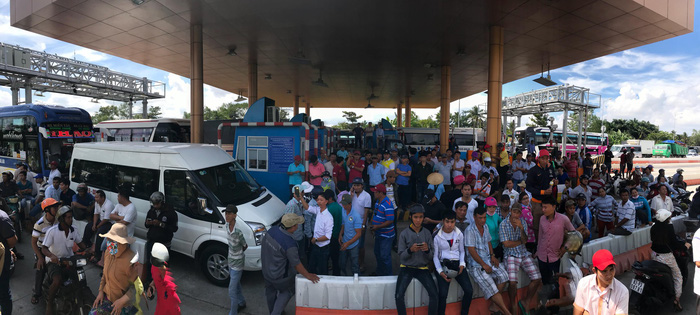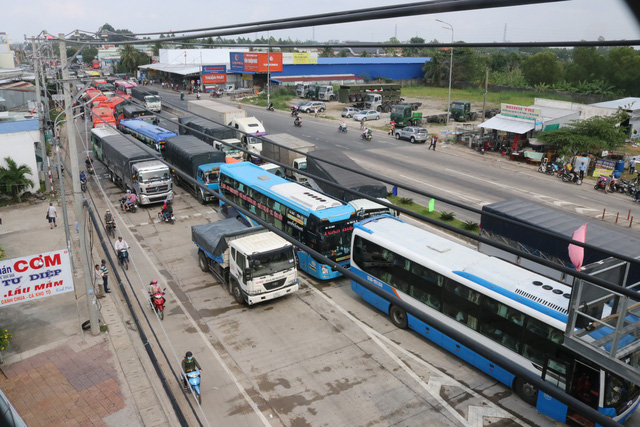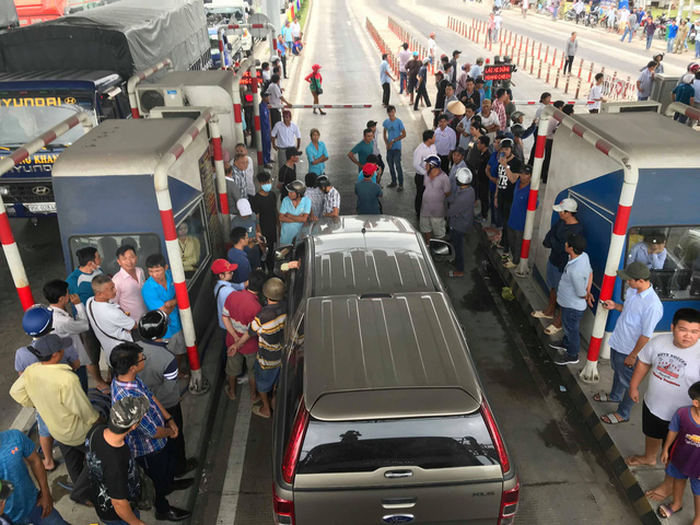Vietnam’s Ministry of Transport has decided on a series of solutions for two tollgates in the Mekong Delta following continuous objections from commuters.
Deputy Minister of Transport Nguyen Nhat convened meetings with authorities of Can Tho City and Soc Trang Province, where the two toll stations are located, to find a suitable solution to end the current situation on Monday.
The first tollgate belongs to a BOT (build-operate-transfer) project on the upgrade of a 22 kilometer section of National Highway 1 from Can Tho to Phung Hiep District, Hau Giang Province.
At a cost of VND1.83 trillion (US$80.6 million), the project was completed in 2015 and the toll collection began in April 2016.
Drivers have been complaining that they are required to pay an unreasonable toll as the rates are charged for the entire 22 kilometer route, while many drivers only need to travel a short distance within the highway section.
Meanwhile, the second toll station is part of the BOT project on upgrading a section of highway as well as building a detour in Soc Trang City, located in the namesake province.
 |
| Many people gather at the toll station in Soc Trang Province to protest on January 8, 2018. Photo: Tuoi Tre |
The work cost about VND1.2 trillion ($52.8 million), and the tollgate was put into operation in June 2017.
The facility is placed on the existing highway, charging commuters regardless of which of the two routes that they pick.
Drivers asserted that the placement is unreasonable, and that developers should only collect tolls from those who want to travel on the new detour, not on the old highway.
Fierce opposition has been sparked among commuters since last week, as drivers stopped their vehicles along all lanes at the two tollgates, refusing to pay.
As the situation escalated and caused long delays of traffic in the areas, the toll stations were forced to repeatedly cease their operations to resolve the congestion.
 |
| Congestion at the toll station in Can Tho City as drivers refuse to pay on January 5, 2018. Photo: Tuoi Tre |
Solutions
During a meeting on Monday evening, the Ministry of Transport stated that it will review a toll exemption policy to residents who live near the toll station in Soc Trang Province, which is expected to be implemented on February 1.
As a temporary measure, buses and other public means of transportation will not have to pay the toll from January 9.
Following the gathering, the collection of road tolls at the facility was resumed at 4:30 pm on the same day.
The project developers are willing to discuss and negotiate with the people to prevent any tension in the future.
Regarding the tollgate in Can Tho City, the transport ministry has agreed upon the toll reduction for certain groups of drivers.
Authorities in Can Tho and Hau Giang Province were tasked with finalizing the list of vehicles that will be eligible for such policy prior to January 15.
Accordingly, the overall rates will be lowered by seven to 10 percent, while vehicles belonging to local residents and businesses will be given a 35 percent reduction.
Developers of the project have taken responsibility for the issue and promised to follow the direction of authorities.
 |
| People express their disapproval at the toll station in Can Tho. Photo: Tuoi Tre |
Problems relating to tollgates of BOT projects in Vietnam have become a hot topic since late last year.
In early December, attention of local media was directed to the toll station of a road project in Cai Lay Town in the Mekong Delta province of Tien Giang due to persistent objections from drivers.
The issue at this tollgate is similar to that in Soc Trang Province.
The opposition was so intense that the prime minister had to order the one-month closure of the toll station to figure out the optimal solution.
Several measures have been proposed by competent authorities but the final decision has yet to be made.
BOT is a project-financing framework in which the developer receives a concession from the private or public sector to finance, design, construct and operate a facility for a certain period, during which it has to raise the finances for the project and is entitled to retain all revenues generated by it.
The facility is then transferred to the public administration at the end of the concession agreement.
Like us on Facebook or follow us on Twitter to get the latest news about Vietnam!






















































